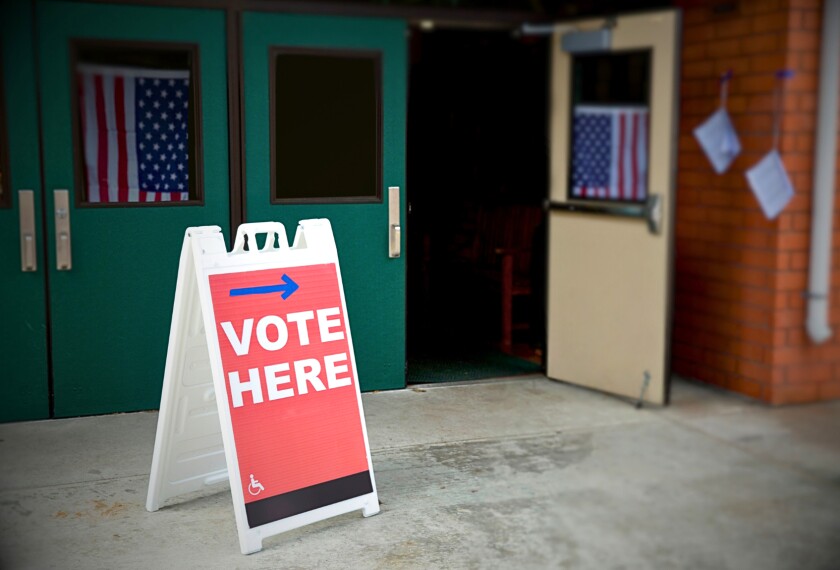The vast majority of school safety plans require administrators to lock exterior doors and limit building access, through protocols like ID checks for visitors.
In Texas, teams of inspectors visit every campus to make sure schools actually practice what they preach.
In unannounced visits, unarmed state employees conduct intruder audits to see if they can get into school buildings and, if they can, how long it takes to do so.
In sometimes divisive debates over school safety, limiting building access is one of the most commonly agreed upon strategies. But all it takes is a few bad habits—propping open a door during recess or waving a visitor past an ID check—for the most well-intentioned plans to fail, said Amy Klinger, co-founder of the Educator’s School Safety Network, an organization that consults with schools on safety plans.
“There is great value in having a fresh set of eyes look your school,” said Klinger, who contracts with districts in other parts of the country to conduct vulnerability audits that included unannounced intruder tests. “We have to be careful that it doesn’t devolve into a ‘gotcha,’ but instead it’s being used as a mechanism for improvement.”
At least 16 states and the District of Columbia require safety audits of school facilities, according to the Education Commission of the States, a policy clearinghouse. But many of those inspections are self-administered, conducted using a simple checklist, and not completed on an annual basis.
Texas’ annual intruder drills, on the other hand, test how schools’ security protocols work in practice.
And last year, schools in the Lone Star State largely passed the test.
Audits check whether schools lock doors and limit access
Inspectors visited 8,400 school buildings in the 2023-24 school year, finding no issues at 9 out of 10 campuses, according to results released Aug. 8 by the Texas Education Agency. Teams contacted district superintendents a week before reviewing one of their campuses, but they did not announce their presence on the day of their visits. What they found:
- In phase 1, teams tried to enter three exterior doors and, if they were unlocked, they walked to the main office to document if anyone stopped them along the way. Ninety-seven percent of campuses had no findings in this phase. In those where teams could gain entry, a majority went through secondary entrances.
- When teams could enter buildings, it took an average of four minutes to get in, and no one approached them in 63 percent of cases.
- In phase 2, inspectors check in at the main office, get a campus escort, and check to make sure every exterior door is closed, latched, and locked. Ten percent of schools had a phase 2 finding, including unlocked or broken doors or door props nearby.
- In phase 3, inspectors checked if random interior doors were closed and locked in districts with local policies requiring such procedures, about half of school sites. Of those sites, 97 percent passed the test.
- Inspectors also checked local logs to ensure on-site staff had conducted regular door sweeps—regular walkthroughs to check if doors are locked—as required by law. Ninety-seven percent of schools were in compliance.
Schools with findings were required to take corrective action within 60 days by discussing the issue with the district’s school board, conducting a live training session with staff, and developing a plan to address any issues with procedures or facilities.
After a 2018 shooting in which eight students and two teachers were killed at Santa Fe High School in Santa Fe, Texas, lawmakers passed legislation that required the state to review schools’ comprehensive safety plans.
Survivors of that shooting complained that the state hadn’t done enough to address student safety after the 2022 shooting at Robb Elementary School in Uvalde, Texas occurred. Nineteen students and two teachers were killed in Uvalde. Texas lawmakers responded with a bill that required armed adults on every campus and annual intruder detection audits conducted by the state’s regional service centers.
Human factors are key to school safety
While lawmakers often call for “school hardening” measures like metal detectors and on-site police following school shootings, safety experts say human factors should be a greater priority. Districts should ensure that staff are trained to respond in a crisis and that they consistently follow safety procedures, like keeping exterior doors locked.
A sophisticated security camera is worthless if no one monitors the footage, and a costly metal detector does little when staff regularly allow students to walk around it. Similarly, experts say that the best safety plans on paper may not be effective if the people who implement them cut corners.
Tests of these procedures are best when they include a range of factors, like whether staff greets students, how quickly they request identification from visitors, and whether entrances are secured, Klinger said.
It’s also important for school leaders to learn to monitor their own compliance and to urge their staff to be consistent, she said.
“People have to be accountable, but it is equally critical that it becomes part of your operations internally so schools are checking themselves instead of just hoping that they don’t get caught,” Klinger said. “It’s sort of like giving people a fish and teaching them to fish at the same time.”
Disclaimer: The copyright of this article belongs to the original author. Reposting this article is solely for the purpose of information dissemination and does not constitute any investment advice. If there is any infringement, please contact us immediately. We will make corrections or deletions as necessary. Thank you.







